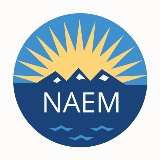On the Path to Leadership, Preparation Paves the Way

Today, she leads the team at Enviance, a role that both challenges her to bring her best self to work each day, while also offering new opportunities to grow. We spoke with her to learn more about the professional habits she credits with her success and the advice she offers to those who aspire to follow in her footsteps.
NAEM: What is it about your career field that you love so much?
AS: In my early days, I spent a lot of my time developing software and working with code, which continues to fascinate me. But when I got into consulting after college, I discovered that I love working at the enterprise-level to figure out how software can be an effective tool for addressing process issues or solving complex organizational problems.
Where do you have a single point of failure? Where do you have something that's not easily repeatable and takes immense amounts of time? Where do you have a problem scaling? It's these types of challenges that I really like to tackle.
NAEM: What are some of the strategies or professional habits that you think make you effective in your role?
AS: Many jobs ago, I once asked a peer, "Why do you think I got this job?" And he said, "Because you really dig in to learn the business, identify what things can be fixed and put a plan in place to fix them." So one of the things I stress to those I mentor is to show more than just tell. Get in and find out what the problems are.
At the end of the day, we're running a business. We need to understand what the problems are in the business, whether it's employee turnover, customer turnover, brand awareness or product performance. You have to dig in, know what the problems are, clearly articulate them, and then build a plan to act on that knowledge.
The second strategy I rely on is preparation. Whether it's a speech or a meeting with the board of directors, it's important to rehearse the interaction, know what could come up, anticipate the reaction and know how you'll respond to questions before you even walk in the door. I try not to get surprised in a meeting, so it is not uncommon for me to speak one-on-one with key contributors and decision-makers prior to a big meeting.
NAEM: What were some of the skills you invested in as you transitioned to being business leader?
AS: Communication skills is one that stands out. And it is a skill. I have really worked hard to be conscious of what I am saying as well as how I frame it.
I remember one class in college where we had to write a paper on a negative topic without using words such as "unfortunately," "however" and "can't." The exercise was a real eye-opener for me in that it showed me how you could craft your message to be positive even in a negative situation. I still use that lesson every day.
As the leader, you have to motivate your team to help them do things well, but you also have to be that coach who understands where they need to improve and how to do that is always a balance. Communication skills is the place where that lands.
The other part of communicating well, of course, is listening well. One of the best mentors I've ever had did this whenever we were approaching a new client project. At the outset of the initial meeting, he would say, "We're not coming in with a presentation; we're going to ask a lot of questions and take a lot of notes."
Showing up at a newly acquired site or a newly acquired company is a perfect example of that. Don't come in and say you know exactly what you will do when you show up. Take the time to listen to the employees. A lot of questions and unique characteristics of the company culture will come out in that conversation. You can ask questions that stir that conversation, but a lot of times, people have the answers in their mind. They want somebody to listen to them, understand their perspective and come back with a plan for how to smoothly integrate the two teams.
NAEM: Why do you think executive presence is an important focus for EHS leaders?
AS: I think it's such an important time to be an EHS professional. These issues are now high on the radar at the C-suite level because investors are asking questions about EHS performance in the same way they do financial performance. Understanding how to communicate EHS performance to executives in material financial terms and risks is critical to your executive presence, and that begins with listening. Take note of how your executives discuss EHS and use that as a guide to better frame the conversation.
My advice to those EHS leaders we work with day in and day out is to share your impact. Don't be quiet about your vital contributions to your company's success. So often in the past, EHS was thought of as "just compliance," but today's EHS leaders need to step outside of their function to educate others on why their work is so important to the business.
In order to communicate EHS performance, you need facts. Just like your financial counterparts, data is the key to communicating to executives. How will you communicate EHS performance metrics if you're not measuring and setting goals across all levels of the organization? How will you accomplish that if EHS isn't integrated into the operational ecosystem? Now is the perfect time for EHS leaders to take a proactive step in communicating the outcomes of their work to the C-suite.
If you'd like to develop the leadership skills you need to be effective and advance in your career, download NAEM's "Strategies to Increase Your Executive Presence" report.
About the Author

NAEM Staff
The National Association for Environmental, Health and Safety, and Sustainability (EHS&S) Management (NAEM) empowers corporate leaders to advance environmental stewardship, create safe and healthy workplaces and promote global sustainability. As the
leading business community for EHS&S decision-makers, we provide engaging forums, a curated network, peer benchmarking, research insights and tools for solving today’s corporate EHS&S management challenges. Visit us online at naem.org.




